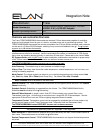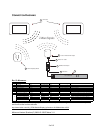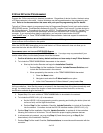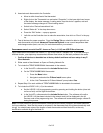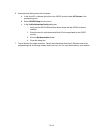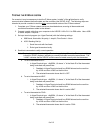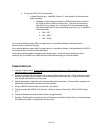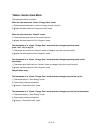
9 of 12
TESTING THE Z-WAVE SYSTEM
On occasion it may be necessary to test the Z-Wave system “outside” of the g! interface to verify
communication between the thermostats and the controller (the VRC0P-1LW). The following steps are
intended to provide a method to test the basic communication status of the Z-Wave network.
1. Complete your Z-Wave network set-up as described above, ensuring all thermostats and
controllers have been added to the network.
2. Connect a serial cable from your computer to the VRC0P-1LW’s RJ-11 to DB9 cable. Use a USB
to Serial adapter if required.
3. Set up a terminal program (ex: HyperTerminal) with the following settings:
a. 9600 baud; 8 data bits; No parity; 1 stop bit; Flow Control – None
b. ASCII Sending Set Up
i. Send line ends with line feeds
ii. Echo typed characters locally
4. Send test commands to verify correct operation:
Note: Terminal programs other than HyperTerminal may display differently. The important thing
is that the “<E000” displays, indicating a correctly formatted command was entered. The
“<X000” indicates that the VRC0P module communicated correctly with the thermostat.
a. To set a thermostat to OFF:
i. In HyperTerminal type: >NxSE64,1,0 where “x” is the Node ID of the thermostat
being controlled and press Enter.
1. Feedback in HyperTerminal should be <E000 followed on the next line
by <X000 and then <E000 on the third line.
2. The selected thermostat shows that it is OFF.
b. To set a thermostat to HEAT:
i. In HyperTerminal type: >NxSE64,1,1 where “x” is the Node ID of the thermostat
being controlled and press Enter.
1. Feedback in HyperTerminal should be <E000 followed on the next line
by <X000 and then <E000 on the third line.
2. The selected thermostat shows that it is set to HEAT.
c. To set a thermostat to COOL:
i. In HyperTerminal type: >NxSE64,1,2 where “x” is the Node ID of the thermostat
being controlled and press Enter.
1. Feedback in HyperTerminal should be <E000 followed on the next line
by <X000 and then <E000 on the third line.
2. The selected thermostat shows that it is set to COOL.



